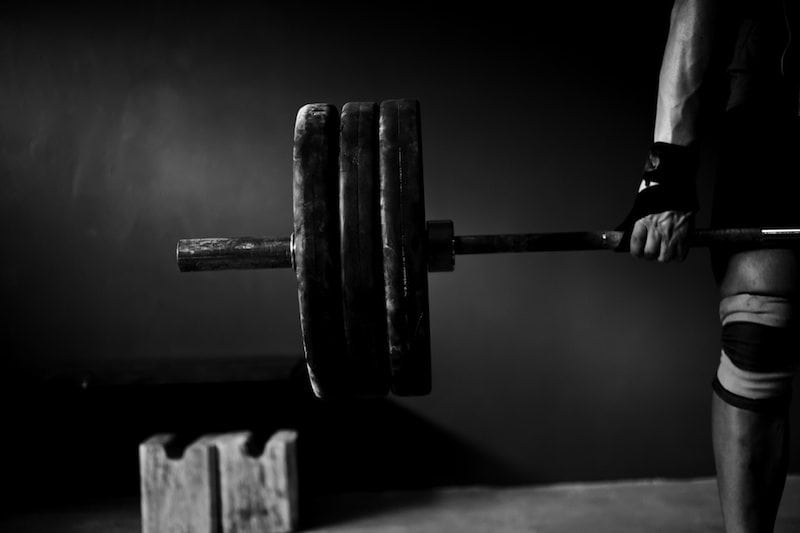No products in the cart.
The Importance of Partial Reps When Building Muscle

Partial reps are something that you see all the time in weight rooms all over the world. Usually being performed by bros in trucker caps who have put way too much weight on the barbell.
Most of these people aren’t even aware that they are performing the exercise poorly. They think that the more weight you put on a bar the more muscle fibres you will recruit.
Luckily more and more people are waking up to the fact that correct technique and tempo are far more important.
Studies have consistently shown that a full range of motion is much more effective at building muscle than a shortened range of motion (partial rep).
Partial reps can also cause injury and put too much pressure on your joints.
But are there any benefits to using partial reps? It is the purpose of this article to take a look through the evidence and decide whether you should add them to your training program or avoid them completely.[toc]
Partial Reps and Hypertrophy
Hypertrophy is the scientific term for increasing muscle size through training. It is the goal of most lifters, particularly bodybuilders to achieve hypertrophy.
It is often amateur and professional bodybuilders who most often promote partial reps as a training tool. Claiming that the shortened range of motion increases tension on the muscles.
However, the science is clear on this subject. While muscles are activated at different points throughout the range of motion, that doesn’t mean that focusing on one part of the ROM will work.
Exercising throughout the entire range of motion will provide the best results for hypertrophy.
A study in the Journal of Strength & Conditioning by Pinto et al found that full ROM of the elbow led to a significantly higher 1rm and increased muscle thickness than a partial range of motion after 10 weeks of training [1].
Another study in 2013 looked at the effect of deep squatting versus partial squatting on muscle and tendon adaptations [2].
The study found that deep squats with a full range of motion were significantly more effective at increasing muscle thickness than shallow squats (or partial squats).
When it comes to hypertrophy, it would actually be better to exaggerate the movement rather than shortening it.
A lot of studies have looked at the effectiveness of eccentric contractions on muscle size and strength.
The eccentric part of an exercise is the part where the muscle is lengthening and the concentric part is where the muscle is shortening.
The eccentric part of the lift requires more muscle fibres. Therefore causing more muscle damage (necessary for hypertrophy) than the concentric part. So spending more time on the eccentric can yield better results.
A 2015 study found that eccentric training produced a greater hypertrophic response than regular training [3].
Is there any Benefit to Using Partial Reps?
Interestingly there has been a study recently (2016) that did find a benefit to using partial reps.
The study was in the Journal of Human Movement and it looked at deep squats versus quarter and half rep squats.
What the study found was that quarter squats helped improve vertical jump height and 40 yard sprint time significantly better than half squats.
Half squats were also more effective than full squats – which had almost no effect on vertical jump height or 40 yard sprint time.
What does this mean? Well when it comes to improving performance for certain sporting or athletic goals, partial reps may be of help [4].
Or perhaps it isn’t as straightforward as that. Remember that there is a lot of carry over in the movements of a vertical jump and a quarter squat. More so than there is in a full squat. Same with running.
Maybe it wasn’t the fact that the quarter squat was a partial rep, but that it more accurately reflected the movements that were tested?
If this is the case (which it probably is) then this both proves and disproves the idea that partial reps are useful.
They are useful if they reflect a movement that you are looking to improve. However, they are not automatically going to improve your sporting performance just because they are partial reps.
What have we learned?
For strength or hypertrophy training, partial reps are a waste of time. They give poorer returns, are more likely to lead to injury, and they offer no real benefits.
If you are looking to improve your athletic performance, then there is some evidence that quarter squats can help improve leg power. And will, therefore, help you jump and sprint better.
This may be due to partial reps being effective but is more likely due to the fact that quarter squats are effective.
If muscle building is your goal then partial reps are probably best ignored. So you should take them out of your workout. There are better alternatives for hypertrophy. Eccentric training, back off sets, drop sets, giant sets, super sets, and many more. Stick to these next time instead.
